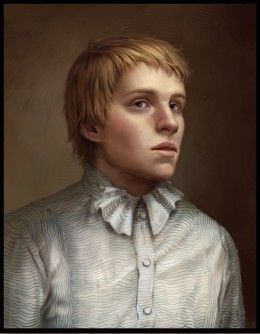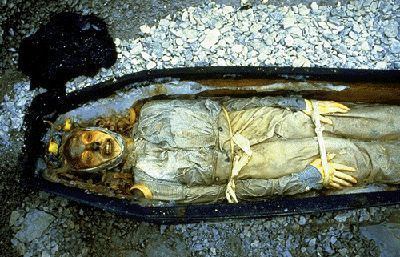Name John Torrington Role Navy man | Died January 1, 1846 | |
 | ||
Similar John Hartnell, William Braine, Rosalia Lombardo | ||
In focus john torrington
Petty Officer John Shaw Torrington (1825 — 1 January 1846) was an explorer and Royal Navy stoker. He was part of an expedition to find the Northwest Passage, but died early in the trip and was buried on Beechey Island. His preserved body was exhumed in 1984, to try to determine the cause of death. It was the best preserved example of a corpse since the ancient Tollund Man which was found in the 1950s.
Contents
- In focus john torrington
- The face of john torrington artistic reconstruction
- 1845 Franklin expedition
- Search expeditions
- Death and autopsy
- References

The face of john torrington artistic reconstruction
1845 Franklin expedition

Torrington was a part of Sir John Franklin's final expedition to find the Northwest Passage, a sea route to Asia, via the northern edge of North America. They set off from Greenhithe, England in two ships, the HMS Terror and HMS Erebus, on 19 May 1845. The trip was expected to last about three years, so the ships were packed with provisions which included more than 136,000 pounds of flour, 3,684 gallons of high-proof alcohol and 33,000 pounds of tinned meat, soup and vegetables. However, after late July no one heard from or saw the crew again.
Search expeditions

Many search parties were sent to look for the missing crew, but nothing significant was discovered until 1850, when the ruins of a stone hut, some food cans, and three graves were found. The graves contained the remains of Torrington, William Braine, and John Hartnell. Torrington had apparently died about seven months into the expedition, which led to further questions as to why crew members had died so early in the expedition. In 1976, the graves were rediscovered on Beechey Island, Nunavut, Canada, and the headboards (presumed to be the originals) were transferred to the Prince of Wales Northern Heritage Centre in Yellowknife. In 1980 anthropologist Owen Beattie decided to analyze the bodies and try to solve the mystery.
Death and autopsy

After ensuring that Torrington's descendants were aware of the plan, Beattie and his team began their work on 17 August 1984. Torrington's coffin was 1.5 metres (4 ft 11 in) deep in the permafrost, which the team had to dig through. When the coffin was opened they saw how well preserved the outer parts of Torrington's body were, apparently not much different from the day he was buried. In order to thaw the body, the team poured water on the ice, to slowly melt it away and therefore not cause any damage to the body. Once thawed, they undressed the body to examine it. They found that Torrington had been very sick at the time of his death—he was so thin all his ribs were visible, and he only weighed about 38.5 kilograms (85 lb). After conducting a thorough autopsy and taking some tissue samples, the team left to analyse what they had discovered.
Tissue samples revealed that Torrington's body had probably been stored on board ship while his grave was being dug; in almost all areas, significant cell autolysis had occurred, and cell definition was very poor. His brain was almost completely gone, leaving only a "yellow granular liquid". The lungs showed scarring from earlier bouts with tuberculosis as well as signs of more recent pneumonia. After toxicology analysis showed heightened levels of lead in Torrington's hair and fingernails, the team concluded Torrington had died from pneumonia, after suffering from various lung problems, which were aggravated by the lead poisoning. Beattie believed that the canned food was the most likely source of the lead. More tests revealed a high amount of lead in all three bodies, and some feel that this was chief cause of the expedition's failure. Photographs of Torrington, in a remarkable state of outward preservation, were published widely, including in People magazine which named him one of the world's most interesting personalities in 1984, and the widely-reprinted photograph inspired James Taylor to write a song, "The Frozen Man", and Iron Maiden to write "Stranger in a Strange Land". British poet Sheenagh Pugh wrote an award-winning poem, "Envying Owen Beattie", about the Torrington exhumation. Authors Margaret Atwood and Mordecai Richler were also inspired by the photograph, and the account of the research provided by Beattie and John G. Geiger in their book, Frozen In Time: The Fate of the Franklin Expedition. Atwood wrote a short story, "The Age of Lead", and Richler included references to the research and the Franklin expedition itself in his novel, Solomon Gursky Was Here.
